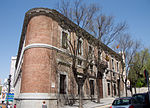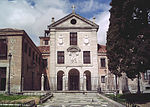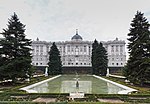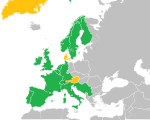Monument to Cánovas del Castillo
AC with 0 elementsBuildings and structures in Palacio neighborhood, MadridMonuments and memorials in MadridOutdoor sculptures in MadridSculptures of men in Spain ... and 1 more
Statues of prime ministers

The Monument to Cánovas del Castillo (Spanish: Monumento a Cánovas del Castillo) is an instance of public art located in Madrid, Spain. The monument consists of a bronze statue of Antonio Cánovas del Castillo by Joaquín Bilbao at the top of a pedestal designed by José Grases Riera that features additional sculptural elements by Bilbao.
Excerpt from the Wikipedia article Monument to Cánovas del Castillo (License: CC BY-SA 3.0, Authors, Images).Monument to Cánovas del Castillo
Plaza de la Marina Española, Madrid
Geographical coordinates (GPS) Address External links Nearby Places Show on map
Geographical coordinates (GPS)
| Latitude | Longitude |
|---|---|
| N 40.420942 ° | E -3.711528 ° |
Address
Cánovas del Castillo
Plaza de la Marina Española
28013 Madrid (Centro)
Community of Madrid, Spain
Open on Google Maps











